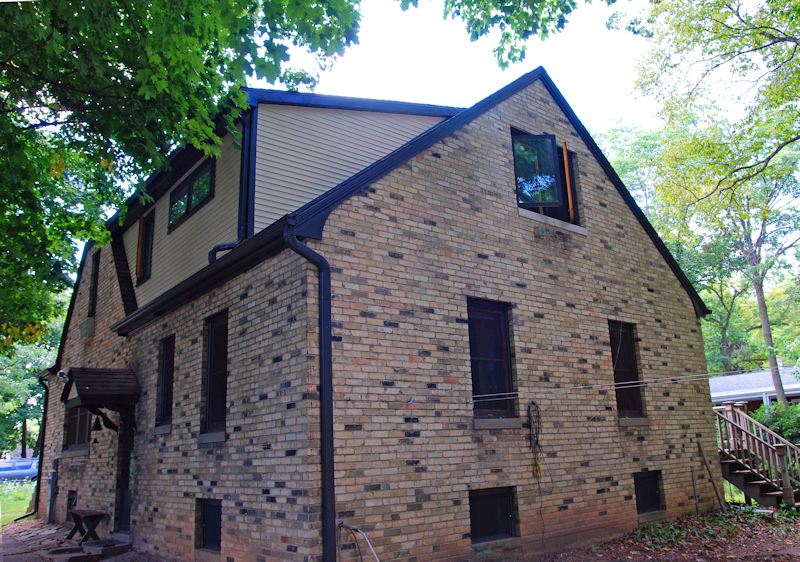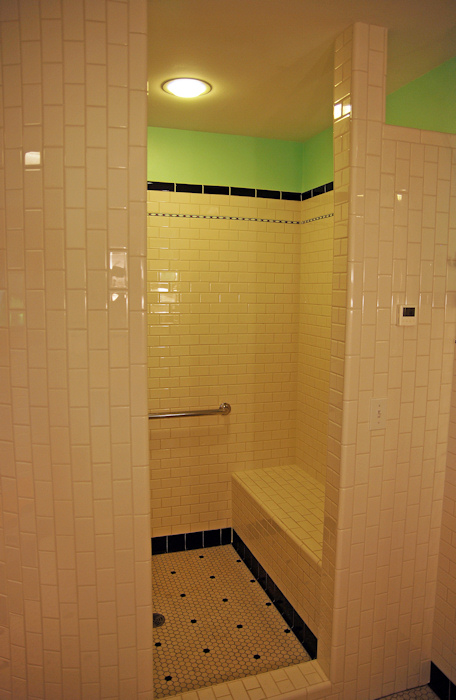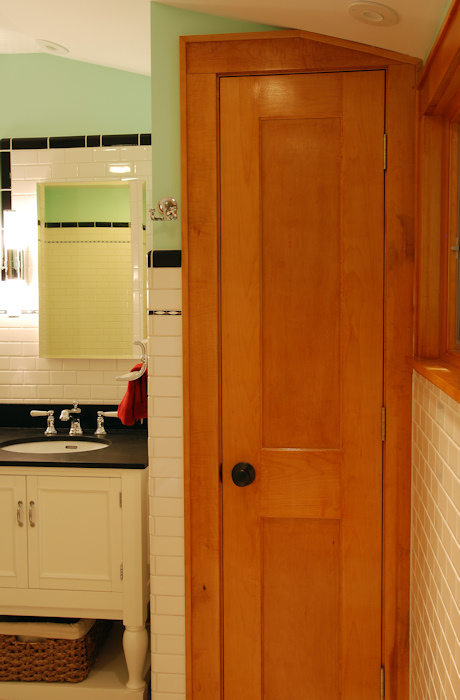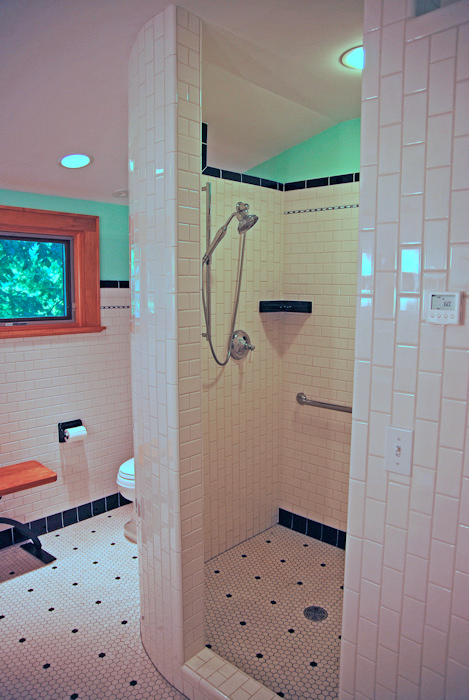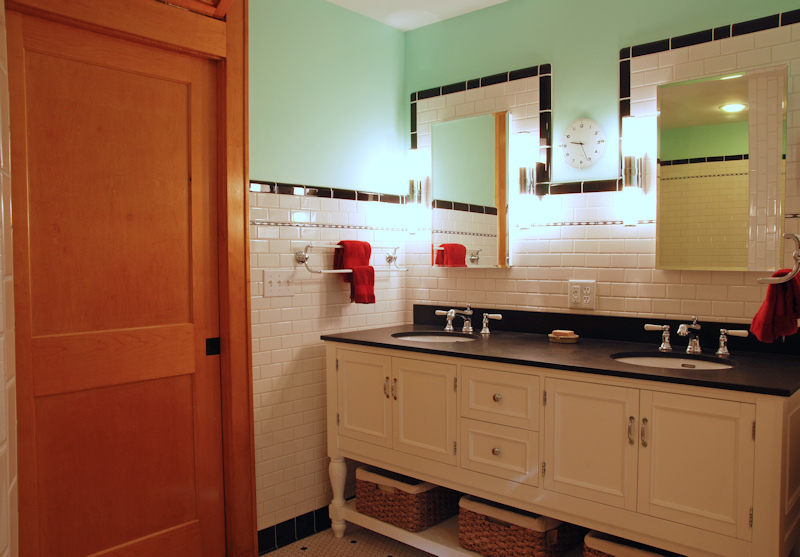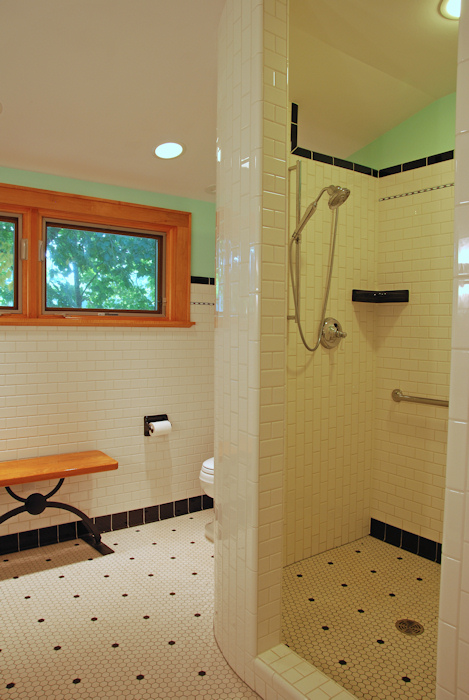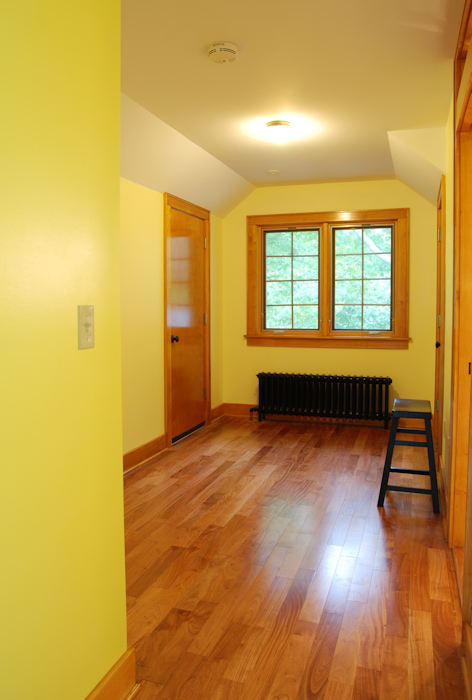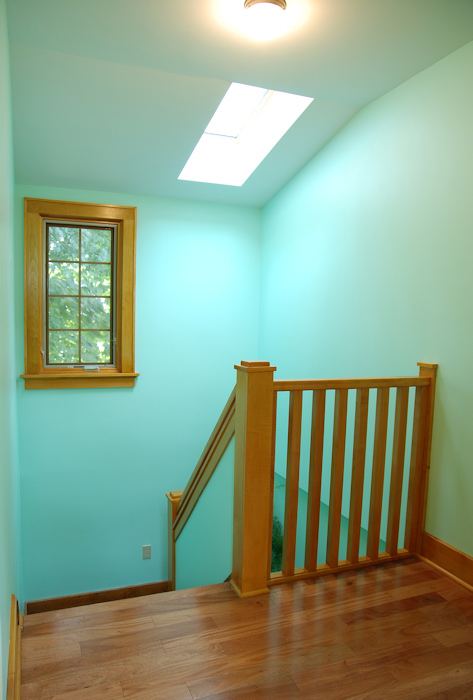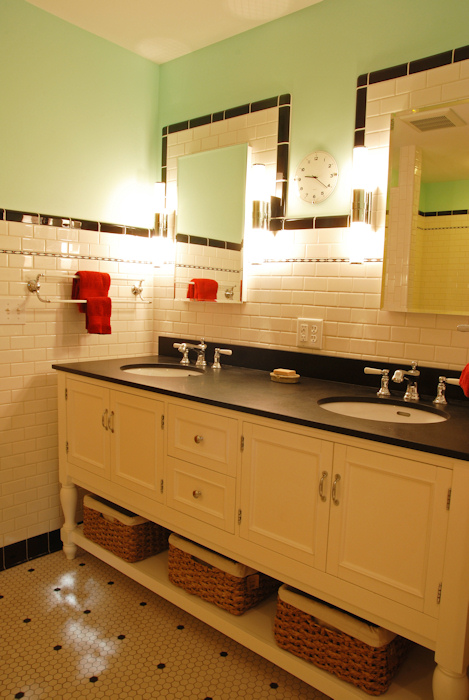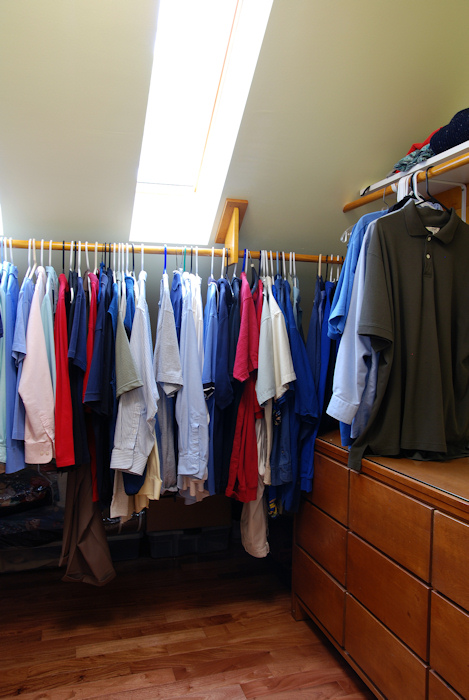Residential Addition – $60,000-$100,000.00
Being owners of a small business much of this client’s time and resources were invested in growing and developing their company. Now the fruits of those labors have been paying dividends and they could turn their attention to one of the things they like best, their home.
Built in the mid 1920’s their two bedroom brick bungalow was on the right lot, in a great and convenient location, and was the place they saw themselves staying in for a long time. As with most Bungalows, the bedrooms were not spacious and there was only one common bathroom. As time and money allowed them to, they converted a portion at the front of the house on the unfinished second floor to a bedroom with more of the room that they desired. The trouble still remained though that most of their clothes were in bedroom closets on the first floor and their only bathroom was too.
The stairway leading to the second floor was dark and the ceiling so low from the pitch of the roof that they had to duck their heads to turn the corner on the stairs. What they wanted was a conversion of the unfinished space for additional closet space, a stairway with head room, more natural light and ventilation, and a big traditionally designed bathroom that they could both use at the same time.
The only way to adequately address these requirements was to construct a dormer that would span over the stairs and create additional space for the bathroom. The remaining unfinished space would be arranged to address the closet and natural lighting they sought. This dormer addition though would not be as straight forward as it would initially appear.
The first challenge was in how to create an exterior that would blend with the almost exclusive brick exterior of the house. If there was not a budget to adhere to, brick on the dormer would have been the natural selection. It was their feeling however that their time and money would be best spent on the interior portion of the project. Because the addition was not on an articulated elevation of the house and there were components of wood siding elsewhere on the house, it was agreed to use pre-finished fiber cement siding in a lap exposure that matched the other existing elements.
With the new dormer intersecting an existing gable end valley rafter there were engineering and aesthetic elements that required specific attention as well to make sense out of how this would work. A significant amount of load transference from the roof to the foundation had to occur as none of the interior walls on the first floor were bearing or structural. Point loads from the roof and valleys had to travel to two new locations where additional footings, steel beams, and columns were added in the basement and walls opened up throughout the first floor to accommodate the additional engineered structure.
Part and parcel to the original scope was to take advantage of the opened spaces in the attic and install duct work for high velocity, forced air conditioning as the house was boiler heated and had no duct work. This would allow duct work in not only the newly remodeled space of the second floor, but supplying outlets and ducts in the ceiling of the first floor from above. The hope and intent was that there may be enough funds left in reserve to install the air handler, coil, and compressor for the system at the end of the project but those hopes were dashed with the expense of all of the structural work that had to be accomplished.
Once the dormer was constructed, the attention was turned to the existing space. The single window at the gable end of the back of the house was widened for two new casement windows; four skylights were added to the roof area in a location where the new walk-in closet would be located, and a skylight added over the stairway was also installed. The existing floor of the second floor space was Pine car siding over the 1×6 sub-floor. All of this had to be removed for the installation of WARMBOARD, engineered, aluminum coated, heat transferring, pex track flooring in the new bathroom and the common hallway as these areas would have in floor heat. Onto that, in all of the areas other than the bathroom which would be tiled, a prefinished engineered floor would be installed to replace the car siding floor. Existing radiators were removed and reinstalled to accommodate the new flooring addition.
Interior walls were framed for the new closet and door openings into the unfinished spaces that would remain for storage and the location of the future air handler. Three pocket doors were framed for the bedroom, walk-in closet, and the new bathroom. Over the bathroom door, an operating transom window was installed to exhaust or draw air depending upon the circumstance, as the new shower is a door-less configuration. (This was not intended to replace or function in lieu of the bathroom exhaust fan; we think it was mostly because the owner thought it would be cool to have an operating transom).
The bathroom is clearly the centerpiece of the project with a very careful and thoughtful approach to its finishes and appointments. The floor of the bathroom, the shower, and onto the bench seat is thermostatically controlled hydronic heat. As mentioned, the shower is door-less with a large tiled bench, 7’ high curved tiled walls that are open to the ceiling, traditional styled mosaic tiles on the floor and shower basin, and a traditional pattern of subway tile, tile base, wainscot, inlay borders, and bull nose cap tiles surrounding the room. The toilet is concealed behind the curved shower wall, and a large linen closet is arranged on the opposite wall facing the toilet.
The vanity is a custom built Maple, white enameled, open base, furniture style vanity with chrome hardware, ball tipped finial door hinges, a soapstone vanity top, white porcelain under mounted sinks, and chrome faucetry with porcelain handles. The shower faucetry is matching chrome, and the towel bars and accessories are in chrome and porcelain to coordinate appropriately.
To finish off the detail of the stairway, railings were installed that did not previously exist and a new craftsman style balustrade was fabricated and installed at the top of the landing.

